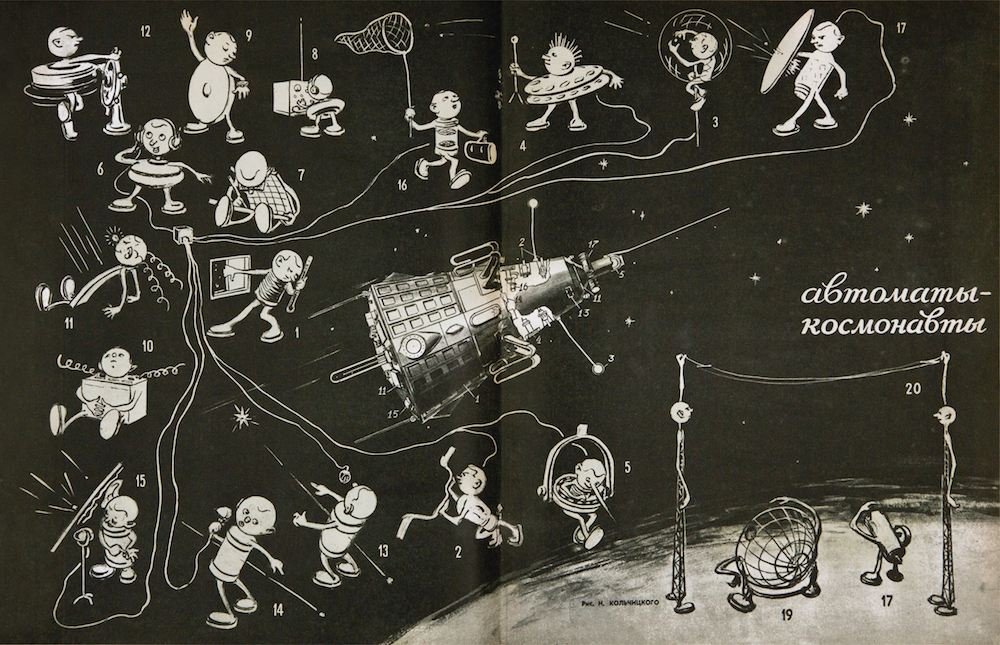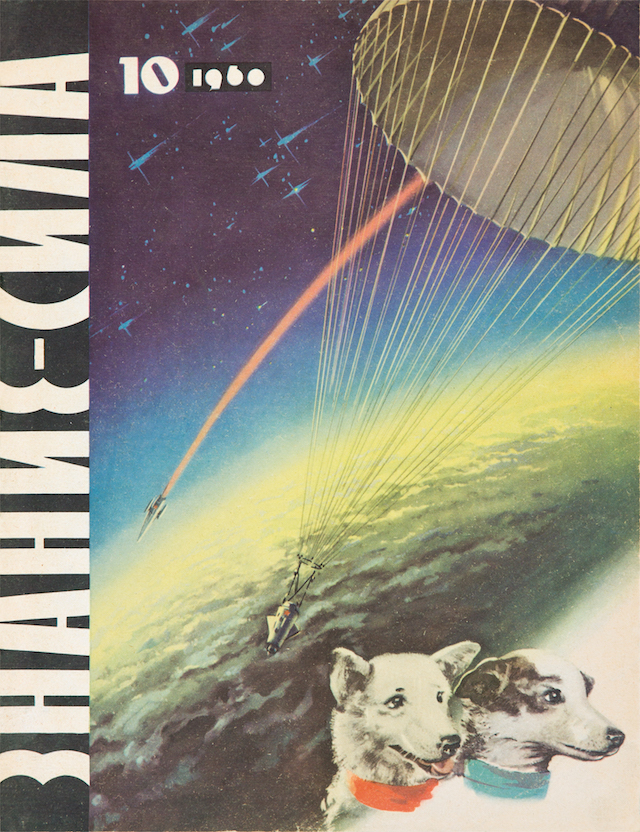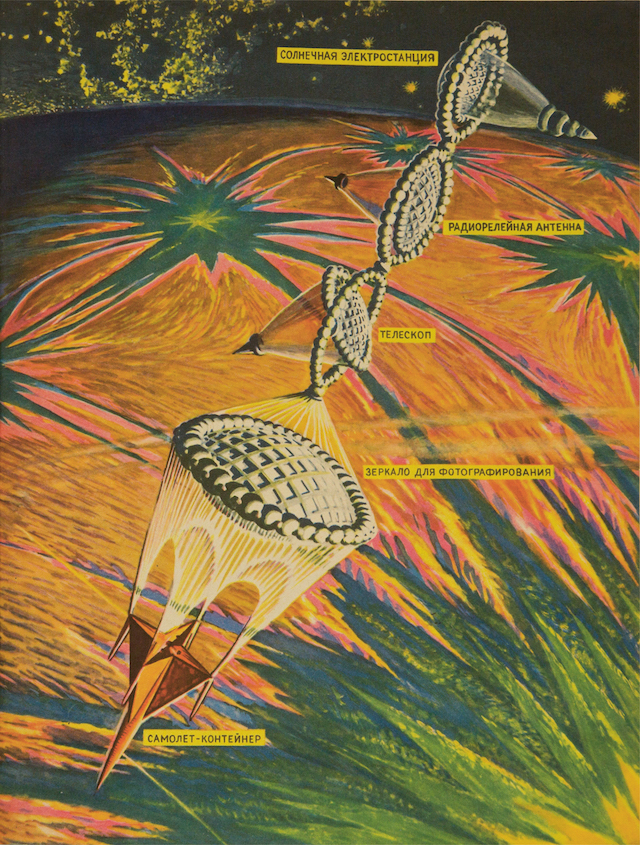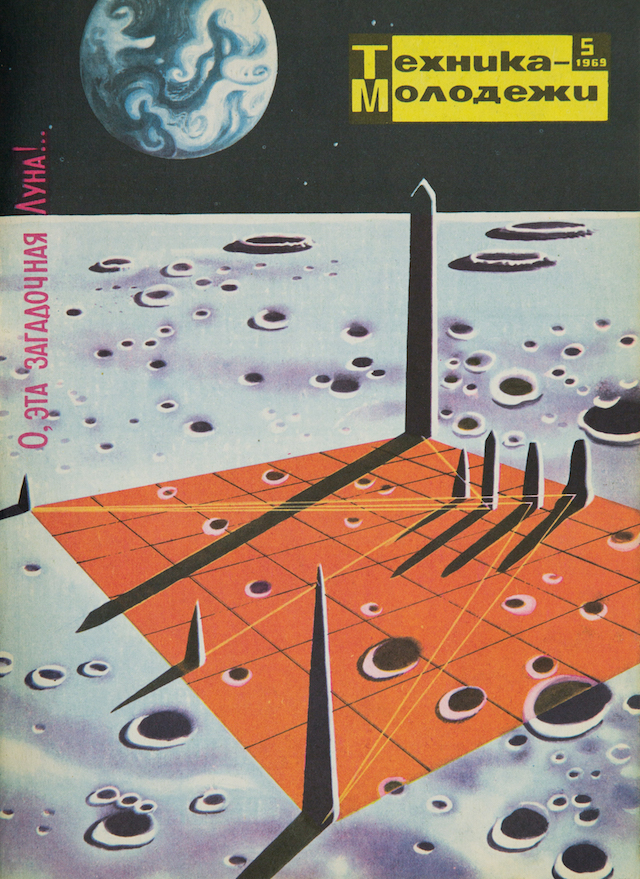In an excerpt from Soviet Space Graphics: Cosmic Visions from the USSR by Phaidon, Alexandra Sankova reflects on Soviet space travel

Will man ever be capable of departing Earth and entering into the vast expanse of space? What would this unknown environment be like? What dangers and challenges await those who are the first to venture into the universe’s uncharted territories? Will spaceships be able to return to Earth once they have left? Long before 1957, when the Soviet Union launched the first artificial satellite, Sputnik 1, into space, these and other questions occupied people’s thoughts as they peered resolutely into the star-studded sky.

For centuries, humankind has been fascinated with what lies beyond the Earth’s atmosphere. But while precious few have experienced space travel first-hand, the race to uncover the secrets of the universe has been a truly global investment. In the Soviet Union, in particular during the Cold War (1947–91), this effort manifested itself most prominently in a wealth of popular-science magazines used by the state to catalyse public engagement. Deliberately aimed at all sectors of society, from children to adults, amateurs to professionals, the magazines contained all manner of scientific and cultural content: articles, statements and commentaries on recent national achievements, as well as literary and art reviews, and the latest science-fiction stories. Underlying the success and accessibility of such magazines was the inclusion of highly skilled, artistic and technical illustrations combined with strong graphic and typographic identities. Far from being mere accessories to the text, the visual elements of the magazines, which often encapsulated feelings of optimism, intrigue and discovery, made readers feel engaged in the effort and included in the action. Such devices were integral to the promotion of state ideology and had an immeasurable influence on generations of Soviet citizens, fuelling a recruitment drive that effectively sustained the space race.

The advancement of Soviet space travel and exploration is inextricably linked to the work of Konstantin Tsiolkovsky (1857–1935), a visionary rocket scientist and mathematician who is considered to be one of the founding fathers of astronautics. During his lifetime he published hundreds of scientific writings – both fiction and non-fiction – but he is perhaps best known for his research into the use of multi-stage rockets for spaceflight. As early as 1903, Tsiolkovsky calculated a velocity required to take a spacecraft into orbit around the Earth using liquid oxygen and hydrogen as fuel. Due to his rather reclusive lifestyle working as a teacher on the outskirts of Kaluga, in western Russia, many of his early works were written in relative obscurity and went virtually unnoticed when they were first published, among them his article for a St Petersburg scientific journal, ‘The Investigation of Cosmic Space by Reactive Devices’ (1903), which only achieved recognition following its republication nearly ten years later. However, the October Revolution of 1917 signified a major turning point in the dissemination of Tsiolkovsky’s ideas; for a new government looking to inspire a national awakening of pride and superiority, the scientist’s humble background and pro-Soviet ideology provided the perfect narrative.

Soviet Space Graphics: Cosmic Visions from the USSR by Moscow Design Museum is published by Phaidon, 20 March (phaidon.com)